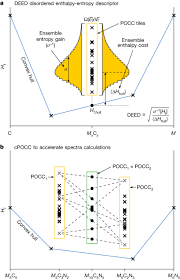Scientists Discover The Most Epic Pair of Supermassive Black Holes Ever Seen

A galaxy some 750 million light-years away has been discovered hosting the heftiest pair of supermassive black holes we've ever seen.
The pair have a combined mass of a whopping 28 billion times the mass of the Sun. While there are certainly individual black holes that exceed that mass, the pair – lurking in a galaxy called B2 0402+379 – represent the chonkiest black hole binary we've found.
And they exhibit several peculiar properties that are helping astronomers figure out what happens to this gargantua when they come together.
The growth of black holes to supermassive sizes is a mysterious process whose vagaries are largely unknown for certain.
Small black holes form from the collapsed cores of massive stars that have burned through their atomic fuel and can no longer shine. These stellar mass black holes can grow by colliding with each other to produce objects too massive to form via the core collapse pathway.
There has to be some method whereby black holes can grow to supermassive proportions – millions to billions of times the mass of the Sun. It seems reasonable to assume that, if small black holes can collide and merge, big ones should be able to as well, a series of hierarchical mergers that eventually produce the giant black holes that sit at the heart of every galaxy.
But there's a potential problem, according to theory. Black holes in binaries grow closer together by shedding their orbital momentum, transferring it onto nearby gas stars that shoot off to parts unknown, and losing it in the form of gravitational waves.
As the orbital distance shrinks, so does the region of space to which they can shed their energy. At a distance of around a parsec, or 3.2 light-years, there is no longer enough room to shed further momentum, so the orbital decay stalls and stabilizes. This is known as the final parsec problem.
B2 0402+379 might, according to a team led by astrophysicist Tirth Surti of Stanford University, be an excellent example of the final parsec problem in action.
The researchers made a careful study of archival data collected by the Gemini Multi-Object Spectrograph (GMOS) on the Gemini North telescope, and made a new analysis that calculates the properties and behavior of the two black holes embedded in the center of B2 0402+379.
Their results give us the mass of the binary – 28 billion solar masses – and find that the galaxy itself is the 'fossil' of a cluster of galaxies. B2 0402+379 was once a group of galaxies hanging out; eventually they smooshed together and became B2 0402+379.
The binary supermassive black hole is what is left of the cluster of black holes that fell into the galactic center and remained there.
Those two black holes are separated by a distance of 7.3 parsecs, or 24 light-years. That's not quite the final parsec, nor is it the tightest supermassive black hole binary we've seen.
But what makes it interesting is that the team's analysis indicates the orbital decay has stalled. Those black holes have been separated by that distance, in a stable orbit, for some 3 million years.
The discovery indicates that high mass might have a role to play in the final parsec problem. The team thinks that the previous orbital decay of the binary ejected so many stars from their vicinity that there are simply now none left onto which they can transfer their orbital momentum. They are pretty well stuck, for now.
"Normally it seems that galaxies with lighter black hole pairs have enough stars and mass to drive the two together quickly," says astrophysicist Roger Romani of Stanford University.
"Since this pair is so heavy it required lots of stars and gas to get the job done. But the binary has scoured the central galaxy of such matter, leaving it stalled and accessible for our study."
So what happens now? We know that, somehow, black holes can grow larger than the binary's combined mass, but these ultramassive behemoths seem to be pretty rare. The nuclear binary of B2 0402+379 appears to be highly stable, with no immediate means of shedding orbital momentum.
It could gain a kick in the right direction from the injection of material that would follow another galactic merger, sending a third supermassive black hole to the party; but all the galaxies that made up the initial cluster have already merged to form B2 0402+379, so that doesn't seem to be on the cards.
There is, however, another possibility. There might be some material within the galaxy that could give the stalled union a helping hand.
"We're looking forward to follow-up investigations of B2 0402+379's core where we'll look at how much gas is present," Tirth says. "This should give us more insight into whether the supermassive black holes can eventually merge or if they will stay stranded as a binary."
The research has been published in The Astrophysical Journal.


 United Kingdom
United Kingdom Argentina
Argentina  Australia
Australia  Austria
Austria  Brazil
Brazil  Canada
Canada  Germany
Germany  Ireland
Ireland  Italy
Italy  Malaysia
Malaysia  Mexico
Mexico  New Zealand
New Zealand  Poland
Poland  South Africa
South Africa  United States
United States 
























